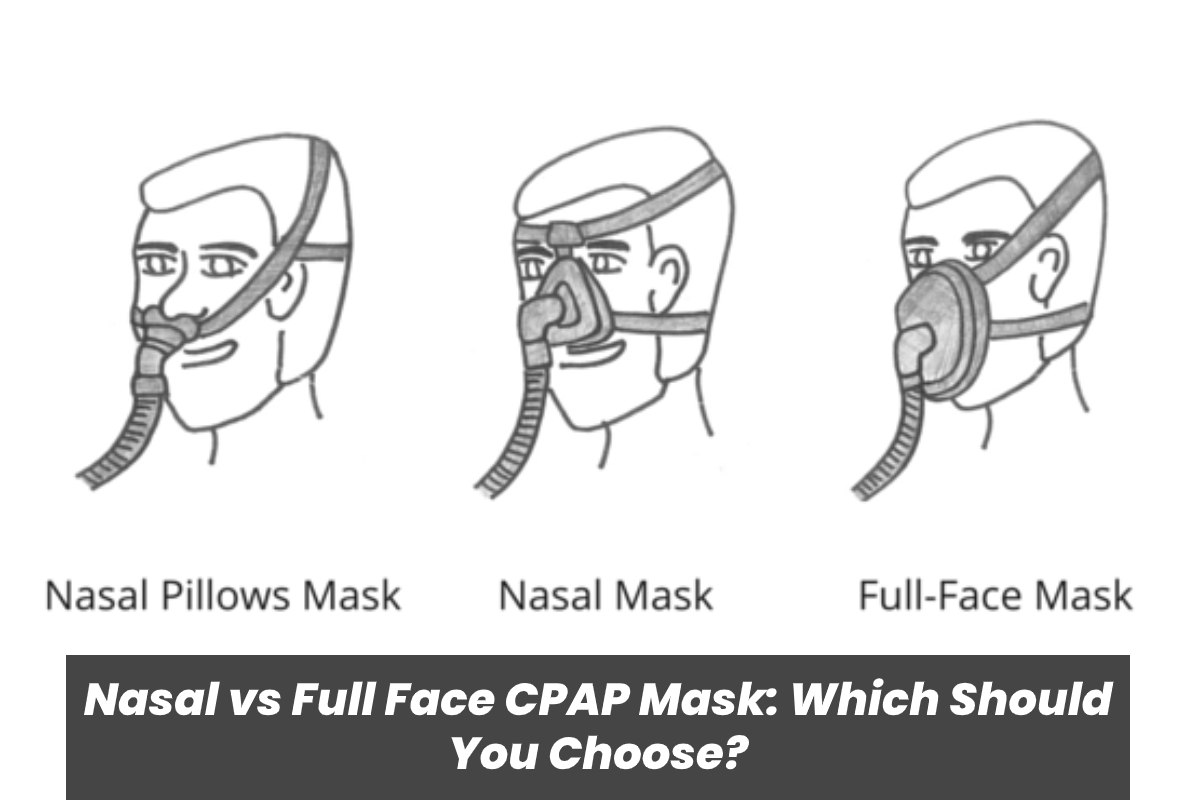Nasal vs Full Face CPAP Mask – Many sleep apnea patients do not realize the dangers associated with their condition. After all, they’re not aware of when they stop breathing – something that can happen repeatedly throughout the night. Therefore, if left untreated, obstructive sleep apnea can lead to a heart attack, stroke, or even heart failure.
To treat sleep apnea, doctors often advise patients to wear a CPAP mask so they can sleep and breathe comfortably. Nasal masks may be recommended, or full face CPAP masks may be used for therapy. Nasal pillows also are prescribed for patients who don’t like the idea of wearing a mask.
Table of Contents
A Vitera Full Face Mask: The Benefits
A patient who is a candidate for a Vitera full face mask may move around quite often during the night. They may also need a higher pressure setting when receiving air through a Vitera full face CPAP mask. With this type of mask, they can enjoy a more natural and increased air flow.
That is because the mask covers both the mouth and nose, and therefore is ideal for mouth breathers. It also works out well for anyone who sleeps on their back. Side straps are used to keep the mask from slipping.
Nasal CPAP Masks: How They’re Used
Patients who use CPAP nasal masks often can choose from one of various fits and sizes. They can also select from an indirect or a more natural flow of air. Like the Vitera full face mask, the nasal CPAP mask can be set at a higher pressure setting.
Also, the various designs of the mask conform well to different facial structures and features. The nasal mask is often recommended for someone who sleeps on their side or moves around a good deal when they’re asleep. However, the nasal mask is not something mouth breathers like, unless they can get used to wearing the chin-strap that is used to keep the mouth and jaw shut. Some users, when wearing the mask, experience irritation and pressure on the bridge of the nose or on the forehead.
Patients with sinus problems may also have issues with air flow delivery. A person with a deviated septum or collapsed nose valve should choose a Vitera full face mask instead.
The Use of Nasal Pillows
Some sleep apnea patients do not want a lot of contact with their face. Nasal pillows offer direct airflow to the nostrils and are not confining like a mask. However, their use may prove uncomfortable at higher settings. A doctor might recommend the use of a nasal pillow for patients who move around in their sleep or feel claustrophobic when wearing a mask.
The pillows also work well for people who breathe through their nose, or have a beard. Placed at the entrance to the nostrils, a direct and pressurized flow of air is applied for treatment purposes. Patients may prefer the pillows if they like to watch TV at night, as they’re less bulky and restrictive.
Advising Patients on CPAP Solutions
A physician who is treating a patient for sleep apnea, should cover the benefits and drawbacks of each of the aforementioned therapies. They should also discuss any concerns the patient’s sleeping partner may have about a specific therapy. As a patient, you need to discuss any problems you’re having with your mask, or if it is more of a hindrance than a help.
Remember, the fit and comfort of the mask play heavily into what you’ll choose in a CPAP device. Both the size and fit should comply with the guidelines established for CPAP treatments. Don’t be afraid to ask a physician if you can switch a mask or a product, if a specific treatment is not working out.

